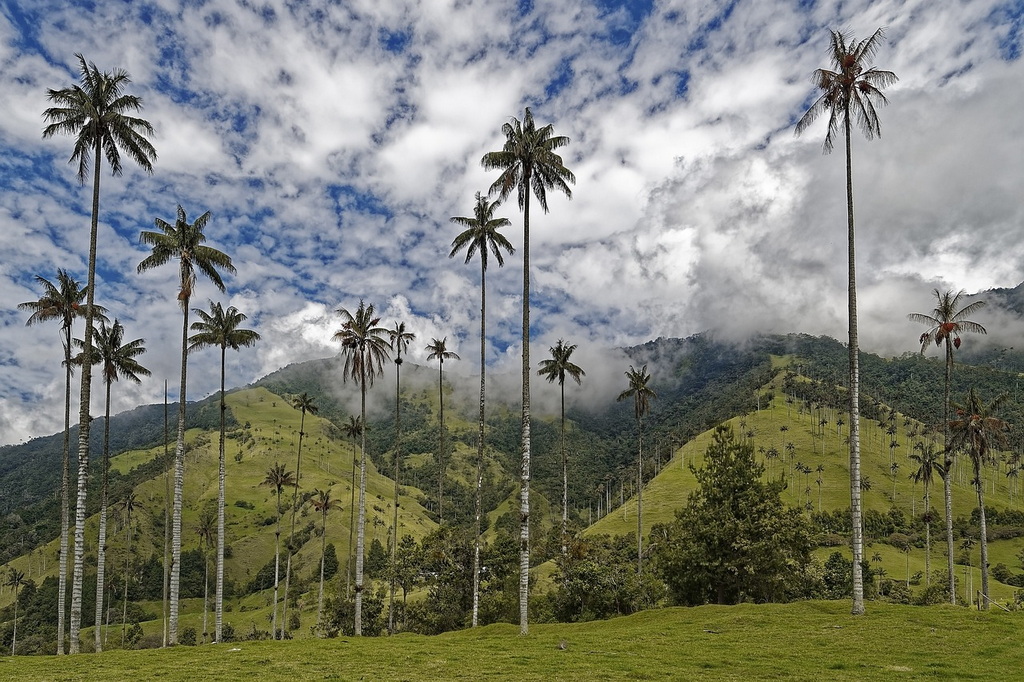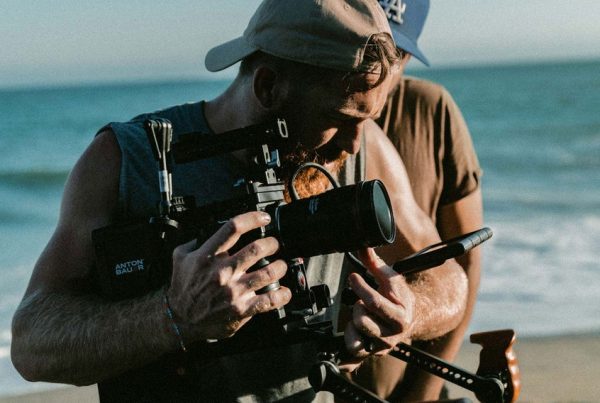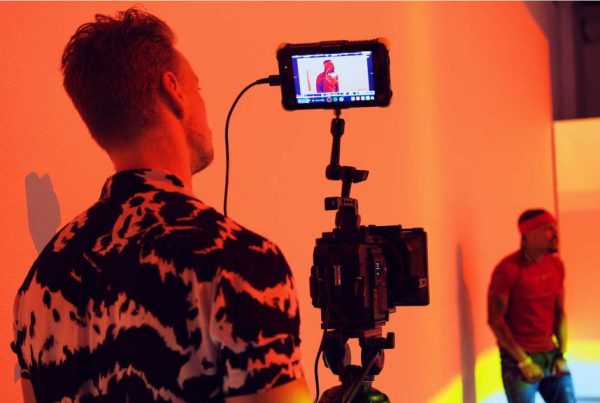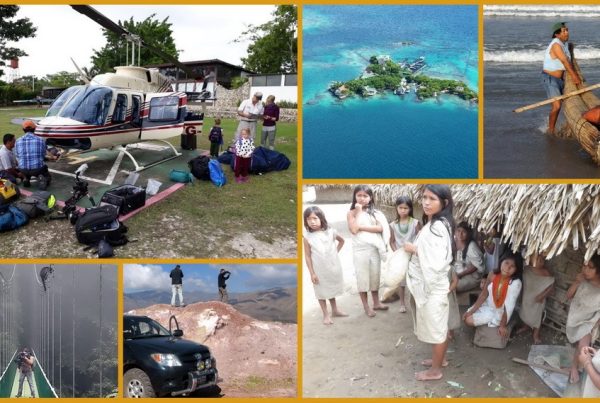Introduction
Latin America, with its spectacular landscapes, vibrant cultures and friendly people, offers a unique and fascinating setting for film shoots. However, to ensure a successful shoot in this region, it’s crucial to be well prepared and to take into account the specific challenges and opportunities it presents.
This practical guide will take you through every stage of your project, from finding the ideal location to managing the crew and respecting the environment and local populations.
1. Preparing your filming project
1.1 Finding the right location in Latin America
The success of a shoot depends heavily on the choice of location. In Latin America, the diversity of landscapes offers a wide range of possibilities, from the Amazon rainforest to vibrant metropolises. Precise location scouting is crucial to finding the ideal place to set the backdrop for your story. This involves taking into account weather conditions, accessibility and the relevance of the location to the scenario.
It’s also important to find out what permits are required. Each country has its own set of regulations governing filming. To avoid any setbacks or misunderstandings with the local authorities, it’s essential to have a thorough understanding of the administrative procedures involved.
1.2 Adapting to the region’s cultural specificities
Latin America is rich in culture and tradition. When planning a shoot in this region, it is essential to understand and respect these specificities. This means making the whole team aware of local habits and customs, to avoid any faux pas and facilitate interaction with the local population. Good cultural integration can open doors and facilitate access to exceptional locations for filming.
Knowing the language or working with translators is also a major asset. This enables you to communicate effectively with local players and ensure that everyone shares the same vision of the project. Cultivating a good relationship with local communities is often synonymous with success when filming abroad.
1.3 Anticipating logistical and administrative challenges
Filming in Latin America can present significant logistical challenges. The distance involved, the transportation of equipment, and the management of accommodation and catering for the crew all require careful planning. It is advisable to work with local service providers who know the terrain and can provide solutions tailored to your needs.
On the administrative front, each Latin American country has its own regulations. It is essential to find out about work visas, filming permits and insurance requirements. A partnership with a local production company can be beneficial in navigating the bureaucratic maze and ensuring that all documents are in order to avoid costly delays.
2. Mastering and managing light and framing
2.1 Use natural light to your advantage
A country’s proximity to the equator is a real asset for filmmakers. It offers a quality and intensity that can contribute to a film’s overall aesthetic. Knowing how to exploit the golden hours of sunrise and sunset can capture images of striking beauty. So it’s essential to plan your shoot around the position of the sun to maximize the use of this natural resource.
The management of strong contrasts, frequent in these latitudes, requires particular attention. The use of reflectors or diffusers can help soften harsh shadows and balance lighting. Knowledge of light management techniques is essential to guarantee the visual quality of shots.
2.2 Choosing authentic backdrops to enhance your images
Selecting authentic backdrops is essential to bring a realistic and immersive dimension to your work. In Latin America, the abundance of historic sites, breathtaking natural landscapes and picturesque neighborhoods provides a rich backdrop for filmmakers. It’s important to choose locations that reflect the soul of the region and fit harmoniously with the story you want to tell.
It’s also important to ensure that the chosen locations are accessible and practical for filming. Careful scouting is necessary to avoid surprises and ensure that the locations selected meet all the technical and artistic requirements of the project.
2.3 Careful framing to capture the essence of Latin America
Framing is a crucial element in creating the mood of a film. In Latin America, where every landscape, every street and every face tells a story, careful framing is crucial to capturing the essence of the region. This involves research and preparation to identify the most evocative and significant angles of view.
Using framing techniques such as the rule of thirds, sequence shots and dynamic camera movements can help create a powerful visual narrative. The aim is to guide the viewer’s gaze and plunge them into the heart of the story, highlighting the beauty and uniqueness of Latin America.
3. Integrating quality sound
3.1 Record soundscapes typical of the region
Sound is an essential component of the cinematic experience, especially when it comes to projects shot in certain Latin American countries. Capturing the typical soundscapes of the region adds an extra dimension to the story. Whether it’s the hum of a bustling city, the song of birds in a rainforest or the sound of waves on a beach, every sound contributes to the authenticity of the work.
To achieve this, we recommend the use of high-quality recording equipment and experienced sound engineers. These professionals know how to isolate the desired sounds and eliminate extraneous noises that could interfere with the clarity of the soundtrack.
3.2 Use local music to enhance immersion
Music is a powerful vector of emotion and atmosphere. Incorporating local music into the soundtrack of your Latin American shoot enriches the film’s cultural content and enhances viewer immersion. It’s important to choose compositions that fit in with the film’s theme and atmosphere, while respecting the region’s copyright and musical traditions.
Collaborating with local musicians can be an excellent way of obtaining original, authentic music. It also fosters cultural exchange, and can result in unique creations that are true sound signatures of your film.
3.3 Ensuring sound quality for an optimal immersive experience
An immersive cinematic experience depends on impeccable sound quality. In Latin America, acoustic challenges can be numerous, especially in noisy environments or changing weather conditions. It is therefore essential to pay particular attention to the equipment used and recording techniques to guarantee clear, precise sound recording.
In post-production, sound work must be meticulous. Mixing, editing and equalization are key stages in achieving a sound rendering that perfectly complements the image and immerses the viewer in the heart of the action. Collaboration with sound specialists is often necessary to achieve the required level of quality.
4. Building the right team
4.1 Recruit local professionals to benefit from their expertise
The involvement of local professionals is a decisive factor in the success of a shoot in Latin America. Recruiting a local team allows you to benefit from in-depth knowledge of the terrain and cultural specificities. Local technicians and creatives bring their unique know-how and understanding of regional dynamics, which can greatly facilitate the production process.
What’s more, working with local talent can contribute to the region’s economy and strengthen ties with the local film community. It also creates an enriching working environment, where sharing skills and perspectives fosters innovation and creativity.
4.2 Ensuring intercultural communication within the team
Communication is the cornerstone of any successful collaboration, especially in a cross-cultural context. To build a strong team in Latin America, it’s essential to establish clear communication channels and respect cultural differences. This often involves overcoming language barriers and adapting to local communication styles.
Training in intercultural communication can benefit the whole team, preventing misunderstandings and strengthening group cohesion. Good communication fosters a positive and productive working environment, where every member feels valued and involved in the common project.
4.3 Collaborate with local talent to enrich your project
Collaborating with local talent brings an invaluable richness to a shooting project. Whether fixers, technicians, dronists or craftsmen, their contribution is often synonymous with authenticity and creative freshness. In Latin America, where cultural diversity is immense, the contribution of these talents can transform an ordinary project into an essential work.
It’s important to create an inclusive workspace where everyone’s ideas are heard and valued. This can encourage innovation and enable the team to work together to overcome the unique challenges of shooting in this part of the world.
5. Respecting the environment and local populations
5.1 Limiting the environmental impact of your shoot
Sustainable production practices have become essential in the film industry. In Latin America, where ecosystems are often fragile and biodiversity rich, it is crucial to minimize the environmental impact of your shoot. This can involve implementing measures such as waste reduction, recycling, using biodegradable materials and reducing the carbon footprint of travel.
Working with environmental consultants or local organizations can help to implement environmentally-friendly practices and raise awareness of their importance throughout the team. By adopting an eco-responsible approach, you’re not only helping to protect the planet, you’re also reinforcing the positive image of your production.
5.2 Involving and respecting local communities during filming
When filming in Latin America, it’s essential to build respectful relationships with local communities. Involving local people in the production process can enrich the film and guarantee its authenticity. This can mean recruiting local extras, consulting community leaders or participating in local development projects.
Respecting local populations also means understanding their expectations and providing fair compensation for the use of their land or stories. This is an ethical issue that can have a profound impact on the perception of your project and the long-term benefits for the region.
5.3 Showcasing the region’s cultural and natural wealth in your project
A successful shoot should showcase the region’s cultural and natural wealth. This means choosing themes and stories that highlight the unique traditions, history and landscapes of these countries. The aim is to create a work that is both entertaining and educational, inspiring respect for and preservation of these treasures.
By working closely with local actors and adopting a respectful, inclusive production approach, your film shoot can become an example of co-creation and valorization of Latin American heritage. It’s an opportunity to show the world the beauty and diversity of Latin America, while making a positive contribution to its cultural and economic development.






